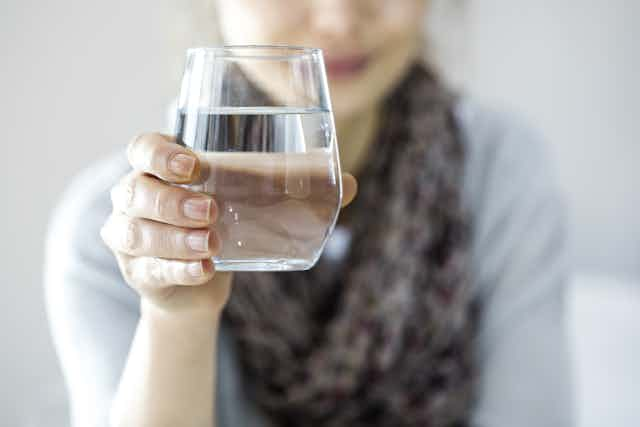Nothing better symbolizes the state of a community’s public health than the availability of clean and safe water. Yet recent water quality tests in Newfoundland and Labrador have found high levels of disinfection byproducts in the drinking water of 119 communities.
Unfortunately, these are not new concerns. CBC first drew attention to the issue of chlorine and disinfection byproducts in the municipal drinking water in 1999. The number of affected communities has since doubled.
Chlorine has been used to disinfect drinking water and prevent waterborne disease since the early 1900s. It has been a great success, preventing millions of deaths and making potable water widely available at a low cost.
Although federal and provincial agencies say the benefits of chlorination outweigh the possible risks associated with disinfection by-products, much of Europe has moved away from disinfectants based on chlorine and other similar chemicals for health reasons.
Canada has the opportunity to adopt a similarly pragmatic approach.
Health risks?
Regulated drinking water systems, including municipal utilities, require a minimum level of treatment. Many water utilities add chlorine twice during treatment. Primary disinfection kills the pathogens found in untreated, raw water drawn from rivers, lakes and other sources. Secondary disinfection maintains drinking water quality within the distribution system.
However, when disinfectants such as chlorine come into contact with naturally occurring organic matter, including algae, bacteria, soil, decomposed plant material or animal feces, they form compounds called disinfection byproducts, including trihalomethanes (THMs) and halogenic acetic acids (HAAs).
Long-term exposure to disinfection byproducts is associated with an increased risk of bladder cancer. Asthma and other breathing issues have also been linked to exposure to disinfection byproducts in swimming pools.
Read more: Why that 'clean swimming pool' smell is actually bad for your health
Many of the communities in Newfoundland and Labrador are remote, and their drinking water is often sourced from ponds and rivers with high levels of natural organic matter and delivered over long distances. Newfoundland surface water is also heavily influenced by extreme and variable weather, creating optimal conditions for the formation of disinfection byproducts.
A Canada-wide problem
Newfoundland and Labrador Municipal Affairs and Environment Minister Graham Letto has said that municipalities should inform residents when THM levels exceed the Health Canada standard of 100 milligrams per litre and take measures to correct the problem.
For example, residents can install NSF-certified filters in water pitchers or under the sink to reduce the disinfection byproducts, or they can boil their water or leave it in an open container in a refrigerator overnight. But these can’t remove all the disinfection byproducts or prevent exposure to them when swimming, showering or bathing.

An alternative approach is to use carbon or membranes to filter the organic matter from the water before chlorination. Many municipalities do this, but it does require a large capital investment and well-trained operators and engineers for ongoing maintenance. This may not be practical for small communities, nor does it eliminate the use of chlorine.
The pathway to safer water
There are other disinfectants available including ozone, chloramines, chlorine dioxide and ultraviolet (UV) light. While these may lower or eliminate the production of disinfection byproducts, some don’t provide enough protection from pathogens along the distribution system, must be produced on site, are expensive or form other undesirable byproducts.
But the pathway to safer water is already in place in Newfoundland and Labrador. A series of pilot projects tested the SanEcoTec AVIVE water treatment system in several municipalities in Newfoundland and Ontario. Instead of chlorine, the system uses a form of hydrogen peroxide combined with silver to provide disinfection with fewer harmful disinfection byproducts as well as better water colour and smell. (Disclosure: I have received research support from SanEcoTec.)
Within two weeks of use, this hydrogen-peroxide water-treatment system met or exceeded disinfection standards, and disinfection byproduct levels were within Health Canada guidelines. The benefit comes from eliminating chlorine from the disinfection process.
Read more: Can drinking water be delivered without disinfectants like chlorine and still be safe?
It can be used in pools, and no disinfection byproducts with any environmental or health impacts have been identified. This approach also produces water that is less corrosive, resulting in fewer heavy metals leaking from piping into the water system, and may extend the useful life of community water infrastructure.
All of this research points to an alternative approach for water treatment that is more robust, effective and healthy. This system can replace the one that has produced crisis conditions for residents of Newfoundland and Labrador and is burdening public health and infrastructure.
Municipalities hesitate to adopt alternative disinfection strategies due their lack of understanding and unwillingness to change. In part, this is due to perceptions the alternative approach is more costly and/or complex. But making the switch could have important public health and economic outcomes.

